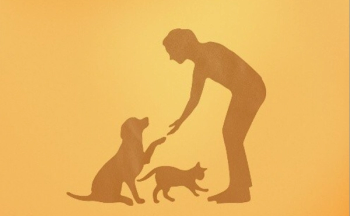
Web Exclusive: Key societal trends that impact practices
National Report - Veterinary practitioners must learn to adapt to current trends and changes that are reshaping American society if they expect to remain successful, a leading practice consultant warns. "How will the future be different? It will be limited only by your imagination and desire," says Karyn Gavzer, MBA, CVPM. "But one thing's for sure: To paraphrase a quote from Will Rogers, you'll get run over if you just sit there."
National Report -- Veterinary practitioners must learn to adapt to current trends and changes that are reshaping American society if they expect to remain successful, a leading practice consultant warns.
"How will the future be different? It will be limited only by your imagination and desire," says Karyn Gavzer, MBA, CVPM. "But one thing's for sure: To paraphrase a quote from Will Rogers, you'll get run over if you just sit there."
Veterinary practices, like all businesses, must re-invent themselves from time to time in response to changing consumer expectations, and there are trends ocurring now that provide some ideas on just how to do that, Gavzer says.
"One of the best ways to think about change, about what's out there that potentially could help or hurt our practices, is to put ourselves in pet-owner mode. Try to think the way our clients probably think about various things that are on the horizon."
Five major, relatively new societal trends, Gavzer believes, already have an influence on the practice of veterinary medicine and will continue to exert an even greater one. Those trends, which Gavzer described for attendees at the recent Western Veterinary Conference in Las Vegas are:
1. Immigration. "The United States is the only major advanced country gaining population. Already a third of the nation is multi-ethnic. If you see the ethnic makeup of your neighborhood changing, look into getting someone on staff who is bilingual or at least familiar with the culture. Clients like to do business with people they feel comfortable with, who are like them," Gavzer says.
2. Innovation. "Sometimes the best-in-class, the leader, in a market has the greatest tendency to grow complacent, but the wisest ones look at what they do best and capitalize on that. They re-invent themselves. So if there's something we do especially well in our practice, we should exploit that."
3. Mass customization. "Our clients are becoming less satisfied with off-the-shelf medicine," Gavzer says. "Just as they like to choose from several ring tones for their phones, they want us to help shape their choices for their pets. They see themselves as special and their pets the same way. So as much as possible, we need to give them breed-specific information on anything we recommend. Tailor all of it to specific clients and pets."
4. Globalization. "We're seeing lots of trends in medicine -- avian flu, for example -- that have worldwide implications. We must learn to play well in the sandbox with everyone...to take note of what's happening with pet care worldwide. What becomes fashionable in another part of the world will become fashionable here and we must be ready for it."
5. Saturation. "There's too much 'noise' in the system for everyone to process everything that's important. It's hard to break through it at times," Gavzer says. "It's hard to believe, but some people never even became aware of last year's pet-food crisis; it passed right over them. Studies show that pet owners often don't know what's available to them, what we can provide. So we must find a way to tell them and personalize the message. They'll listen, but they're less likely to respond to canned messages."
Besides those five major trends, Gavzer cites other changes and/or influences on society that veterinarians should be aware of and respond to. They include:
- The "green revolution." "Even if you're not yet into it so much yourself, realize that others, including your own employees, are. There are a number of ways you can show a concern for the environment within your practice, even if you take only some small initial steps."
- Rise of complementary medicine. "Things like alternative therapies, custom diets and the like aren't going away," Gavzer says. "Pet owners are learning about them and care about them, so people need to respond accordingly."
- Being authentic. "In our fast-paced world, people hunger for 'real' moments with their families and with their pets," Gavzer says. "They may not have much time, but many are trying to carve out more quality time with those they care about. We need to show somehow that we care, too, by personalizing services as much as possible. Telling them to have a nice day doesn't do it. It's the antithesis of being real."
- The role of women. "It's women, women everywhere. More Baby Boom women are working now than ever," Gavzer says, "and there are more of them working in veterinary medicine than ever. They're buying more practices, so there's a market for those who are selling. Women also still do a lot of the shopping. To attract them, we must accommodate them. In our practices, instead of always hiring the 20-somethings, think about hiring some who are older and more experienced. You'll benefit from their experience, and your staff makeup will better reflect the makeup of society."
- Workplace changes. "More employees will give you the loyalty you want if you can offer them some flexibility in hours, shifts, flex time and in other ways that meet their changing personal and family needs," Gavzer says.
- New veterinary services. Practices that keep on top of the trends should be offering services like more personalized health care, less invasive procedures and tests (like laser spays -- "People are willing to pay for it," Gavzer says), more emphasis on cat care because studies show cats have been getting less attention, more senior-pet care and more customized and life-stage care. "Don't just tell clients the pet needs to lose weight or go on a diet. Give them a specific plan."
Newsletter
From exam room tips to practice management insights, get trusted veterinary news delivered straight to your inbox—subscribe to dvm360.






